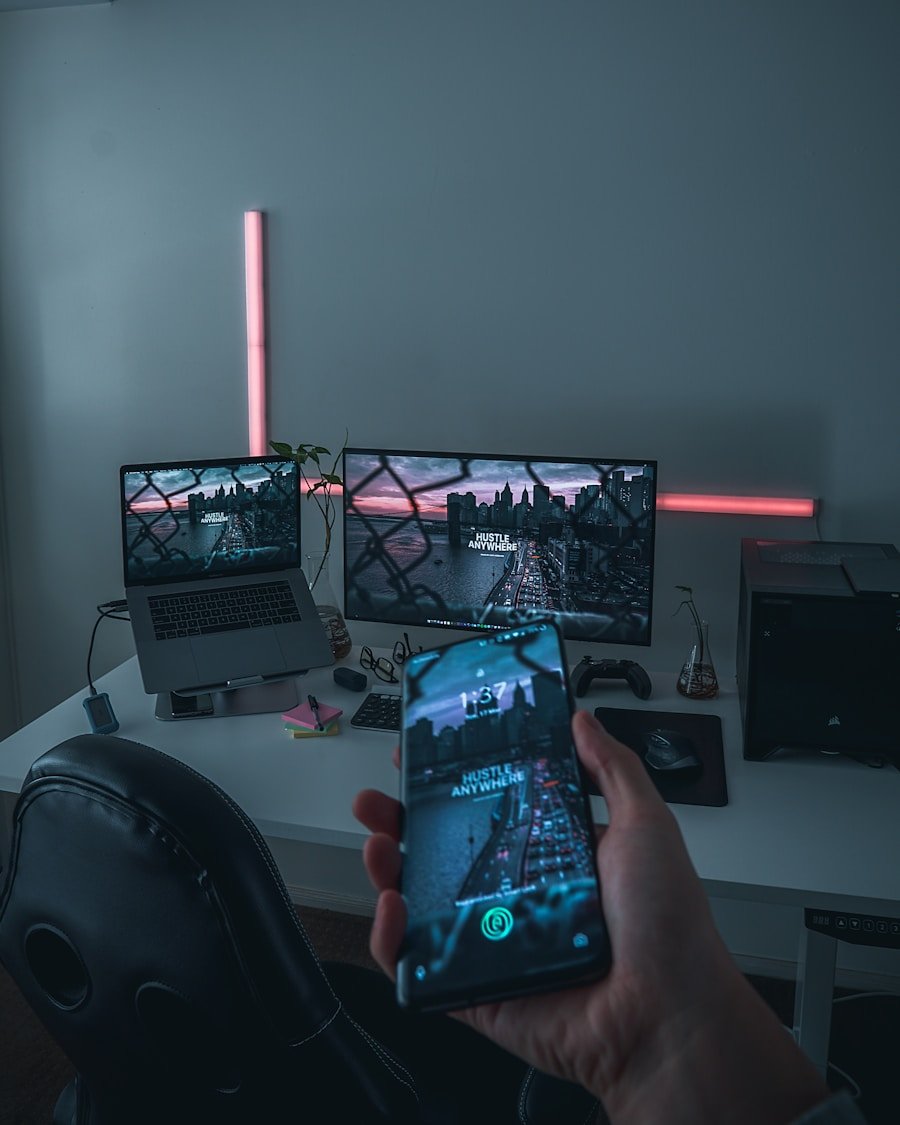Now Reading: Optimizing Your Phone for Gaming: Tips and Tricks
-
01
Optimizing Your Phone for Gaming: Tips and Tricks
Optimizing Your Phone for Gaming: Tips and Tricks

When I think about optimizing my gaming experience on my smartphone, the first step is to understand the hardware specifications of my device. The performance of any mobile game largely depends on the capabilities of the phone itself. Key specifications to consider include the processor, RAM, graphics processing unit (GPU), and display resolution.
I often find myself checking these specifications before downloading a new game, as they can significantly influence my overall experience. Moreover, the GPU plays a crucial role in rendering graphics and ensuring that the visuals are not only stunning but also fluid.
A high-resolution display can enhance my gaming experience by providing sharper images and more vibrant colors. However, I also need to be mindful of how these specifications impact battery life and heat generation during extended gaming sessions. By understanding my phone’s hardware, I can make informed decisions about which games to play and how to adjust settings for optimal performance.
Key Takeaways
- Understanding your phone’s hardware specifications is crucial for optimizing gaming performance
- Choosing the right gaming apps and settings can greatly enhance your gaming experience
- Managing your phone’s storage and memory is essential for smooth gaming performance
- Maximizing battery life for gaming can be achieved through various settings and strategies
- Utilizing gaming accessories and peripherals can take your gaming experience to the next level
Choosing the Right Gaming Apps and Settings
Choosing the Right Games
I understand that not all games are created equal, and some are designed to run smoothly on lower-end devices, while others demand high-end hardware to function properly. Therefore, I always read reviews and check compatibility before downloading a game to ensure it will run well on my device.
Customizing Game Settings
Many games offer various settings that allow me to adjust graphics quality, frame rates, and other performance-related options. By experimenting with these settings, I can find a balance that maximizes both visual quality and performance.
Staying Up-to-Date and Exploring Genres
Developers frequently release patches that can improve performance or fix bugs that may hinder gameplay. I make it a habit to check for updates regularly, as these can enhance my gaming experience significantly. Furthermore, I often explore different genres of games to find what suits my preferences best, whether it’s action-packed shooters or immersive role-playing games. This exploration not only keeps my gaming experience fresh but also allows me to discover titles that run exceptionally well on my device.
Managing Your Phone’s Storage and Memory

Managing storage and memory is another critical aspect of ensuring a smooth gaming experience on my phone. Over time, I accumulate various apps, photos, and files that can take up valuable space and slow down my device. To combat this, I regularly review my storage usage and delete any unnecessary files or apps that I no longer use.
This not only frees up space for new games but also helps maintain optimal performance by reducing clutter. Additionally, I often utilize cloud storage solutions to back up important files and photos, allowing me to delete them from my device without losing them permanently. This strategy has proven effective in keeping my phone’s storage manageable while still having access to my important data when needed.
Furthermore, I pay attention to how much RAM is being used when I’m gaming. Closing background applications that consume memory can significantly enhance performance during gameplay, allowing me to enjoy a smoother experience without interruptions.
Maximizing Battery Life for Gaming
Battery life is a crucial factor when it comes to mobile gaming, especially during long sessions. I’ve learned that certain practices can help me maximize battery life while still enjoying my favorite games. One of the first things I do is adjust the screen brightness; lowering it can significantly reduce battery consumption without sacrificing too much visibility during gameplay.
Additionally, I often enable battery saver modes when playing less demanding games or when I’m running low on power. Another effective strategy I’ve adopted is managing background processes. By limiting notifications and background app activity while gaming, I can conserve battery life and focus solely on the game at hand.
Furthermore, I make it a point to keep my phone updated with the latest software versions, as manufacturers often release updates that optimize battery performance. By implementing these strategies, I can enjoy extended gaming sessions without constantly worrying about my phone dying mid-game.
Utilizing Gaming Accessories and Peripherals
To enhance my gaming experience further, I’ve explored various accessories and peripherals designed specifically for mobile gaming. One of the most beneficial additions has been a gaming controller that connects via Bluetooth. Using a controller not only provides better control over gameplay but also makes it more comfortable for extended sessions compared to touchscreen controls.
I’ve found that certain games are optimized for controller use, which can elevate the overall experience. Additionally, investing in a quality headset has transformed how I engage with games. The immersive sound quality allows me to hear subtle audio cues that can be crucial in competitive gaming scenarios.
Moreover, some headsets come with built-in microphones, enabling seamless communication with teammates during multiplayer games. By utilizing these accessories, I’ve been able to create a more enjoyable and immersive gaming environment that enhances both performance and comfort.
Optimizing Network and Internet Connection for Gaming

Reliable Wi-Fi Connection
A stable internet connection is vital for online gaming. I ensure that I’m connected to a reliable Wi-Fi network rather than relying on mobile data whenever possible. Wi-Fi typically offers faster speeds and lower latency, which are essential for real-time online gameplay.
Configuring Router Settings
I also take the time to configure my router settings for optimal performance. This includes prioritizing bandwidth for gaming devices and minimizing interference from other devices connected to the network. Additionally, using an Ethernet connection with an adapter can provide even more stability if I’m playing on a device that supports it.
Improved Gameplay Quality
By focusing on these aspects of my network connection, I’ve been able to reduce lag and improve overall gameplay quality.
Implementing Performance-Boosting Apps and Tools
In my quest for an optimal gaming experience, I’ve discovered various performance-boosting apps and tools that can help enhance my phone’s capabilities. These applications often provide features such as memory cleaning, CPU optimization, and game-specific settings that can significantly improve performance during gameplay. For instance, some apps allow me to allocate more resources to specific games while temporarily disabling background processes that could hinder performance.
Moreover, I’ve found that using a game booster app can help manage system resources effectively by automatically closing unnecessary applications when I launch a game. This not only frees up RAM but also ensures that my device runs at peak performance during critical moments in gameplay. By incorporating these tools into my routine, I’ve been able to enjoy smoother gameplay with fewer interruptions.
Maintaining and Updating Your Phone for Gaming
Finally, regular maintenance and updates are essential for keeping my phone in top shape for gaming. I make it a habit to check for software updates frequently since manufacturers often release patches that improve performance and security. Keeping my operating system up-to-date ensures that I’m benefiting from the latest features and optimizations designed specifically for gaming.
Additionally, I perform routine maintenance tasks such as clearing cache files and uninstalling unused apps to keep my device running smoothly. This proactive approach helps prevent slowdowns and ensures that I can enjoy an uninterrupted gaming experience whenever I pick up my phone. By prioritizing maintenance and updates, I’ve been able to extend the lifespan of my device while maximizing its potential for gaming enjoyment.
In conclusion, optimizing my smartphone for gaming involves understanding its hardware specifications, choosing the right apps and settings, managing storage effectively, maximizing battery life, utilizing accessories, optimizing network connections, implementing performance-boosting tools, and maintaining regular updates. By following these strategies, I’ve been able to create an enjoyable gaming environment that allows me to fully immerse myself in the virtual worlds of my favorite games while ensuring smooth performance throughout each session.
If you’re looking to optimize your phone for gaming, you may also be interested in learning about the latest gaming hardware news, upgrades, and innovations. Check out this article to stay up to date on the best tools and equipment to enhance your gaming experience.
FAQs
What does it mean to optimize a phone for gaming?
Optimizing a phone for gaming means adjusting its settings and performance to enhance the gaming experience, such as improving graphics, reducing lag, and maximizing battery life.
How can I optimize my phone for gaming?
You can optimize your phone for gaming by closing background apps, clearing cache, updating software, adjusting display settings, and using gaming mode or performance-enhancing apps.
What are some tips for optimizing a phone for gaming?
Some tips for optimizing a phone for gaming include using a high-performance mode, reducing screen resolution, disabling notifications, and using a cooling pad or fan to prevent overheating.
Can I optimize my phone for gaming without using third-party apps?
Yes, you can optimize your phone for gaming without using third-party apps by manually adjusting settings, closing background apps, and keeping your phone updated with the latest software.
Are there specific phone models that are better for gaming?
Some phone models are designed with gaming in mind and may have features such as high refresh rates, advanced cooling systems, and optimized performance for gaming.



























